There’s only one real problem with the 1993 Super Mario Bros. movie: its name.
I saw this so-called video game adaptation for the first time in mid-90s, shortly after it came out on video. My memory of it was of a mind-bogglingly weird movie that had nothing to do with the game, made no sense, and was a beautiful train wreck of a thing. Rewatching it as an adult, I expected to have the same reaction and was looking forward to enjoying what was certainly a movie that’s so bad, it’s good.
But taking another look at Super Mario Bros. turned out to be so surprising that it bordered on horrifying. Luigi just said something funny. I laughed at it. This dinosaur-themed dystopia looks really cool. I don’t understand. Why isn’t this a bad movie? That’s the trick to Super Mario Bros. If you’re not intent on it being about a video game, it becomes an engaging, well-acted (mostly), fascinating, original story. And it pulls this off almost completely by accident.
Thank You So Much-A For Buying My Rights
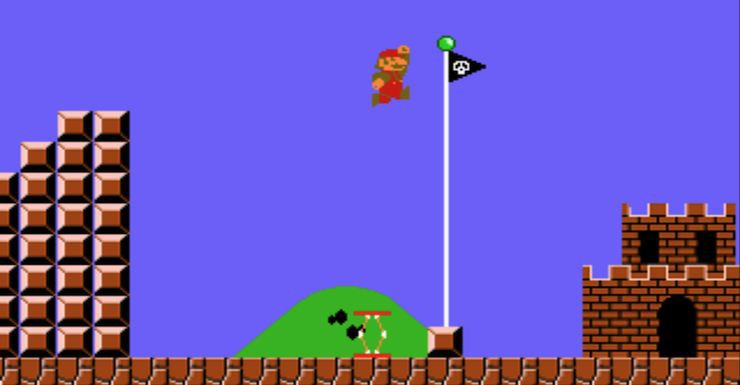
Husband and wife directing team Annabel Jankel and Rocky Morton scored the brass ring. Commercial directors looking for their first big feature film project, the duo managed to secure the film rights to the Super Mario video game franchise in such a way that Nintendo was not allowed any oversight or veto power on the production. (A markedly different arrangement than the upcoming animated Mario film, which game creator Shigeru Miyamoto is heavily involved with.) Their lucky break had arrived, their chance to prove to the world that they weren’t just directors, they were filmmakers. And, as we would eventually see, not just filmmakers, but auteurs.
There was just one problem… one thing standing in the way of their vision… the Super Mario Bros games have no story. In the very first game, Mario and Luigi must fight through eight worlds filled with many of the same enemies and power-ups to rescue Princess Peach (or Princess Toadstool in the original English translation) from Bowser, the evil King of the Koopas. These people don’t know each other. There are no mentions of plumbers or New York City. There is no why behind any of this. The only motivation that the game gives you is the inability to travel backwards.
But, this is Hollywood filmmaking, so while the complete lack of a story may be a problem, it’s not a non-starter. A story can be grafted on, or assembled out of the iconic elements of the game, namely mushrooms, a princess, a lizard-king, warp pipes, Yoshi, goombas, and so on. And this Mario movie went through some truly bizarre iterations, including a “Mad Max” knockoff with a script strong enough (focused on social and political commentary) to lure in much of the main cast. This version definitely informs the visuals of the final film. As the movie developed, there were more changes to come to the script, mostly owing to Jankel and Morton remembering that they were making a movie out of a kids’ video game. The ensuing jumble of elements resulted in the actors basically being handed an entirely new script once they arrived on set. That script is what we’ve since come to know as Super Mario Bros.
It’s A-Me, Warning A-You About Fascism
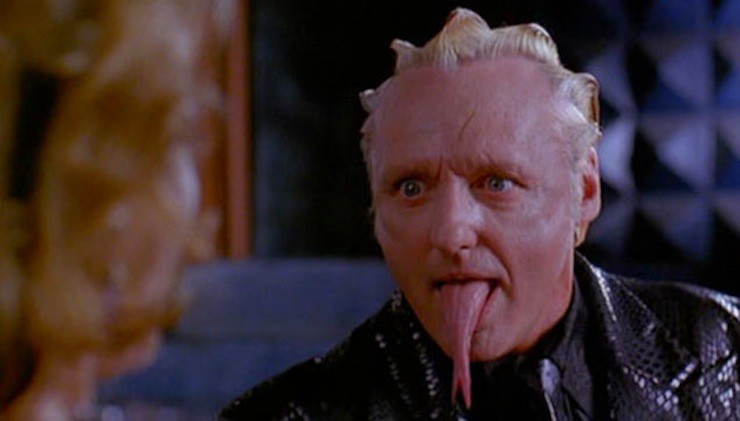
It’s not hard to see how the Super Mario Bros. movie project went wrong, if only because of the enormous mix of styles in play. (Wires got so crossed that art and set production was reportedly in progress on a “Wizard of Oz” concept even as the script veered into the “Max Max” sci-fi concept.)
And while it’s easy to paint the movie’s directors as inexperienced they certainly weren’t uninspired. From their inception into the project, Morton and Jankel were very intent on using this big screen opportunity to tell a story that would really thrill and impact moviegoers. Social and political commentary first appears as an aspect of the film when they come onboard, and that same socio-political commentary is present throughout a large portion of the finished Super Mario Bros. film.
Super Mario Bros. is very obviously a morality tale about the consequences of consumer excess and how that can lead to a state of fascism, and it’s easy to imagine Morton and Jankel making this movie even if they weren’t forced to heed the fact that they were essentially making a children’s movie. This was the idea in their heads, this was what they wanted to talk about, this was their vision. Seminal works, the directors may have repeated to themselves, are the hardest to birth, because history hasn’t yet vindicated them.
And oh, what a work is Super Mario Bros.
Here We Goooo!
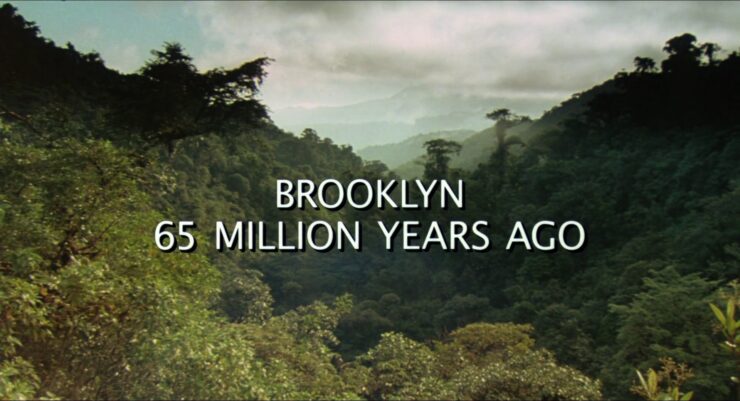
The movie opens with a roughly animated sequence describing (courtesy of Dan “Homer Simpson” Castallaneta doing his best fake Italian accent) what dinosaurs are and what happened to them. “It just don’t get no better than this,” one of the dinosaurs literally says. Then the meteor strikes and all of the dinosaurs die. Or maybe they didn’t?
The opening voice-over makes one hell of an extrapolation, jumping from “What if the meteor didn’t kill all the dinosaurs?” directly to “What if the impact created a parallel dimension where the dinosaurs continued to thrive and evolve into vicious, aggressive beings, just like us!” It’s delivered so quickly, and the main title gone so fast, that before you can utter any sort of WTF, Samantha Mathis is already onscreen, pretending to play her character’s mother, and dropping off a HUGE EGG filled with HER CHILD in front of a Brooklyn nunnery while the words “Music by Alan Silvestri” shrug their way onscreen.
(Super Mario Bros. is actually full of interesting appearances from folks of the same stature as Castallaneta and Silvestri. If Bob Hoskins were still alive, and this movie had a cast reunion, it would be so. interesting.)
Not-Samantha-Mathis-with-a-hood runs back into the sewers and is confronted by Dennis Hopper as a human Koopa who only gets time to ask, “Where’s the rock?” before a sudden cave-in kills Not-Samantha-Mathis (later found out to be the Queen-in-Exile).
This is a pretty hokey start to the movie, and begs to be riffed on, MST3K-style. It’s also by far the worst part of the movie. So while it’s not great that your opening scenes and premise produce enough eye rolls to power the eastern seaboard, it’s at least nice to know that the worst is over with.
We then shift to present day (for the movie, which still means pre-internet) and the apartment of the Mario brothers, plumbers extraordinaire. Luigi spends his time watching trashy TV docs about supernatural phenomena and I love him while Mario answers the phone and hustles them out on jobs and I love him, even if those jobs are as mundane as fixing a broken dishwasher at Brooklyn’s River Cafe.
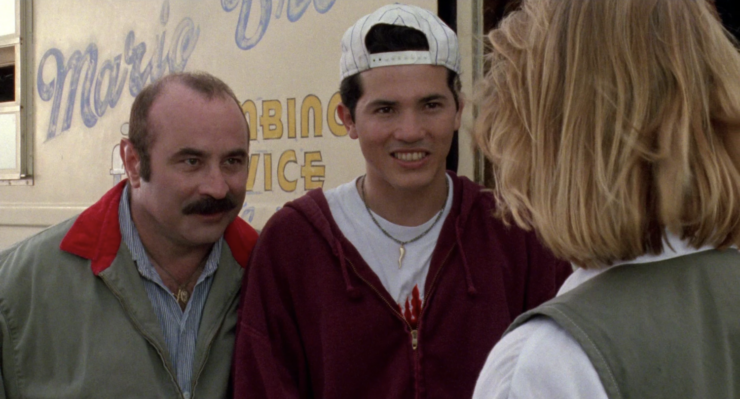
Right from the start, Bob Hoskins as Mario and John Leguizamo as Luigi are completely adorable. Mario is gruff but loving, and Luigi is a completely sweet happy bouncy child. While on the way to the dishwasher job Luigi turns down a random alleyway because he’s “got a feeling this’ll be a shortcut.” (Which is dumb because Brooklyn Heights has, like, three streets JUST PICK ONE but sweet because, you know, at least he’s having fun and keeping his spirits up even though they’re three months behind on rent.) It’s not the Great American Novel, but it’s more characterization than you expect from a video game movie.
Our next scene brings us just a couple blocks away, to what we would recognize these days as Brooklyn Bridge Park but what is, in the movie, an excavation site being tended by New York University and headed up by Daisy (Samantha Mathis), she who was an egg in the first scene. She’s being threatened by the head of bi-coastal construction firm Scapelli. Scapelli himself is a sleazy creep, going so far as to intimate that she will join the recent string of Brooklyn girls who have gone missing. And while, yes, they are trying to lay in some exposition there, it’s jarring how quickly Scapelli goes from 3 to 10 in trying to hustle out a bunch of archaeology students.
JUMP CUT and we are introduced to Koopa’s two goons, Spike and Iggy, who are played by Richard Edson and FISHER STEVENS? My very particular squeeing dies down enough during this scene to notice that Iggy and Spike have been kidnapping the aforementioned Brooklyn girls in their search for Daisy, who they’ve now spotted wandering around the Brooklyn waterfront looking for a payphone.
Coincidentally enough, the Mario brothers’ van also breaks down by a payphone and Luigi and Daisy meet-cute. Luigi hangs up on a huge, well-paying job, he is so smitten with Daisy, while Mario storms out of a bodega complaining about the three bucks he just spent on bottled water.
I am convinced that this single act of complaining makes him a hero more than anything else he does in the movie.
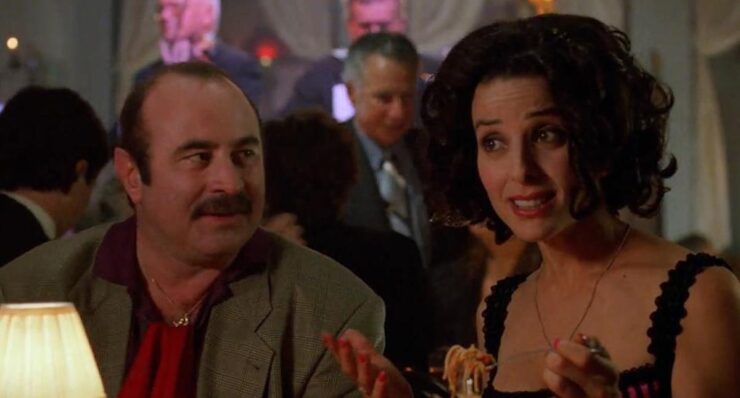
Luigi stumbles over himself offering Daisy a ride back to the site (and is kind of a little homophobic in the process? But again, it’s the early 90s in the movie) and Mario saves him by being the classy one and coaching Luigi on how to ask her out to dinner. She accepts, and we jump to a scene in an Italian restaurant with the three of them and Mario’s girlfriend Daniella, an accordion troupe in the back and oh my god, is this Moonstruck now? I mean, I am totally fine if it is Moonstruck now, I just want to know for sure.
The dinner also serves as Plot Exposition and Luigi’s Awkward Flirting Showcase. We learn that Mario raised Luigi like a son, that they found iridium at the digging site in DUMBO, and that Daisy never takes off a crystalline rock she has tied around her neck. Luigi walks Daisy back to work, both going to great lengths to prove to each other how unappealing they are, culminating in this great line from Leguizamo:
“If you wanna end this right now and you feel bad about that but you wanna talk to somebody about it? You can call me.”
Aside from the batty little introduction, so far the Super Mario Bros. movie has given us a straightforward, colorfully-acted story with a lot of great lines tucked here and there. The above line in particular is funnier and more charming than it has any right to be. I started rewatching this film completely prepared to riff on it and to bemoan my having insisted on watching it as a child. Instead, I’m totally falling for it.
Meanwhile, Luigi and Daisy are getting along so well that Daisy has offered to show Luigi the DUMBO fossil excavation site, which we now know also has a meteor in it. If you don’t admit right now that this is the best first date idea ever then I don’t know what to do with you because seriously what is more exciting than that?
Luigi and Daisy have an almost-smooch but are interrupted by PLUMBING SABOTAGE from Scapelli, causing Mario to head to the scene to fix it, followed by Iggy and Spike, who promptly smack the Mario brothers and take Daisy through some caves and through a wall. Luigi tries to get pull her out of the sandy, inter-dimensional wall but only manages to grab the rock from around her neck.
Luigi jumps in after her, prompting Mario to kind-of-sort-of follow him, and they tumble BETWEEN DIMENSIONS before rematerializing in the Mushroom Kingdom. (Mario: “I disintegrated. Am I still here?”)
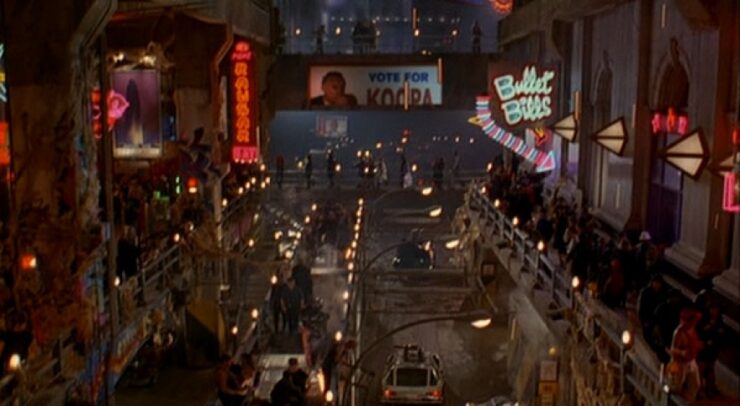
Mario and Luigi chase Daisy through a harsh, metal and fungus-filled dystopian version of New York City. (They have the K train here. For Koopa.) Multi-level streets, neon and rust everywhere, sparks flying from overpowered, cobbled-together technology, all of it shot through with dusty, moldy fungus… this is a society on its last legs, despite the propaganda posters up everywhere touting a bright new tomorrow as brought to you by King Koopa.
Mario: “Where are we? We went under the river but this can’t be Manhattan…”
Luigi: “I dunno. I ain’t been to Manhattan in a couple of weeks.”
From a production standpoint, we are presented with an astoundingly massive set, absolutely packed with extras of every shade, dressed oddly and behaving nonsensically. You’re straining to take every detail of this harsh, electropunk Blade Runner-type world in, struggling to find something you can identify with that doesn’t remind you of the more unpleasant aspects of our own society. The movie, the production crew, and the directors are going all out to immerse you in this world and they succeed wholeheartedly.
There is a definite vision at work here and this is the first point where it becomes apparent that shoehorning the Super Mario games into this actually hinders the world you’re being presented with. A video game player’s expectations of the Mushroom Kingdom do not match the movie’s representation whatsoever, and the strength of them both is so equally matched that it creates a discord that throws you out of the movie.
Luigi, Mario, and Daisy are also summarily thrown out of the movie, taken by various authority figures, so we can meet our villain, Dennis Hopper, also known as King Koopa. He hates being stuck in this world and has become germophobic as a result, refusing to touch people and dipping his hands in sizzling antibacterial muds. He doesn’t exist in a castle so much as a skyscraper, but it’s still the most recognizable environment from the game, all harsh triangles and stairs in odd places. Koopa wants Princess Daisy and her rock, which turns out to be the last chip from the meteorite that struck 65 million years ago. Joining that rock to the meteor will merge the worlds back together and Koopa will lead an invasion force and take control of our abundant natural resources. Resources which this dinosaur society has drained completely.
There’s an odd car crash scene involving an old woman who constantly tases people, which somehow results in a woman named Big Bertha taking Daisy’s rock and jumping many, many feet in the air to the other side of the street. Before we (or the Mario brothers) can process this, MOJO NIXON ARRIVES. He’s playing Toad, a protestor/busker who is promptly arrested for singing an anti-Koopa song. Koopa’s put an alert out for plumbers, so we get to see how the Mushroom Kingdom’s PD works!
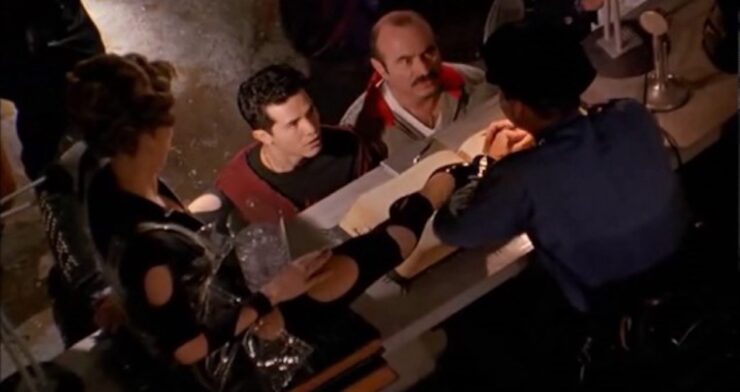
Daisy, meanwhile, is thrown into a room containing all the missing Brooklyn women, including Mario’s girlfriend Daniella. (Amusingly, one of the women is “from Queens. But she’s alright.”)
We’re given a whirlwind tour of the baffling technology that this world uses. In the Mushroom Kingdom, no time is spent on pleasantries, everything is comprised of rough angles, and things seem to only be half-thought through. The police department head turns out to be Don Lake, a character actor from the Christopher Guest films. Here he plays a strict but spineless authority figure and locks everybody up, though not before throwing them through an even weirder “defungusing.” (“Prepare! To be! Defungused!”) Every so often we get some exposition yelled at us, learning that Mario and Luigi’s last name is “Mario” and that the fungus covers the entirety of civilization. We’re also introduced to the concept of “de-evolution” as punishment, with Mojo Nixon theorizing that the fungus is the old king, deposed by Koopa. (He’s right.)
Koopa shows up, pretending to be Mario and Luigi’s lawyer, mostly so Hopper can ham it up. Everyone’s taken to be de-evolved and Mario and Luigi escape, though not before Toad is de-evolved into a goomba. Koopa loves goombas! He’s ridiculously cute with them, yelling stirring epithets at them (“Walk tall! Be proud! Go goomba!”) and even giving Toad Goomba his harmonica back.
Luigi briefly notices a mushroom on the fungus but Mario hates it, acting like a character in the Super Mario Bros. movie and not like Mario, the actual character from the Super Mario games. It’s a small moment, but it leaves you with a further disconnect between the movie and the game. It makes sense for Mario to like mushrooms in the game, and it makes just as much sense for him to not like mushrooms within the story of the movie. The narrative of the movie is actually better at supporting itself than the game that it’s adapting. Weird, right?
FIONA SHAW SHOWS UP as Lena, Koopa’s right-hand woman, and basically plays Aunt Petunia from Harry Potter except actively, fabulously evil. She fills Daisy in on her lineage and then presumably heads back to Privet Drive to slowly pluck feathers from Hedwig or something.
Koopa has Iggy and Spike evolved so they’ll be smart enough to track down Mario and Luigi, which they do, commenting extensively on Koopa’s fascist state and the general degradation of their society all the while. Mario and Luigi ambush and interrogate them in the Kalahari Desert and they decide to team up to get the rock back and free Daisy.
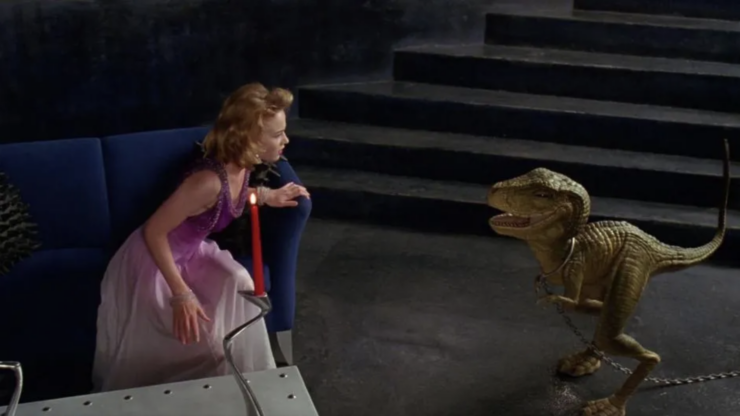
Samantha Mathis then gets a couple more scenes with Koopa and Yoshi and it’s all very… meh. Despite the aforementioned script and direction troubles, Super Mario Bros. is actually a well-acted film. Nowadays, Bob Hoskins and Dennis Hopper are among the more vocal detractors of the film, but you can’t tell from their performances here. They’re both present, entertaining, and struggling to define a bit more of their characters in each scene that they’re in. Leguizamo similarly gives everything he’s got here (which makes sense considering that this was his first starring role in a major film). Fiona Shaw only gets about four scenes but to this day I still believe she’s a dinosaur. In contrast, Mathis’ performance comes off flat. (Reportedly, Mathis was dating River Phoenix at night and shooting The Thing Called Love at the same time, hence her unfocused performance.)
While the concept of the movie and the concept of the game its based on are actively fighting each other, the actors’ performance in the film, along with the immersive design, keeps you in the movie. Super Mario Bros. is buoyed along even further by asides and scenes that are always funnier than you’d expect, as well. (The rescue of the Brooklyn girls is pretty hilarious.) And once you get about 2/3rds of the way in, all of these elements mesh into a cohesive romp. You give up on getting the Mario you grew up playing. You’re invested in this Mario and Luigi now, and you want to see how their story ends.
The movie ties up the action with Koopa and Mario going after each other on the streets while Luigi and Daisy hustle everyone out of the dimension. Lena does her best Wicked Witch of the West impression and merges the rock with the meteor, causing Koopa to show up in DUMBO for a little bit. Luigi fixes that mess and he and Mario team up against Koopa, blasting him with de-evolution rays until he turns into a T-rex and then into T-rex-shaped goop.
The entire movie immediately breaks out into Return of the Jedi-style galaxy-wide celebration, the old king turns from fungus into Lance Henrikson (seriously) and Luigi and Mario go home, Luigi finally gets a smooch, and Daisy stays behind to rule and rebuild her new world.
And that’s the movie. And it’s a good movie with a strong aesthetic. Directors Morton and Jankel lucked out in choosing screenwriters that left them with a lot of solid, if disjointed, material, actors that could infuse that material with character despite the sheer oddness of the film, and a production crew and budget that constructed a believable world.
It just wasn’t the world we wanted for a Super Mario Bros movie, and that’s where it falls apart. It’s definitely a world, and I assert it’s a world containing the message that Morton and Jankel intended to portray, ham-handed as it was. (It might be more accurate to call the movie something like Dystopiasaurus?)
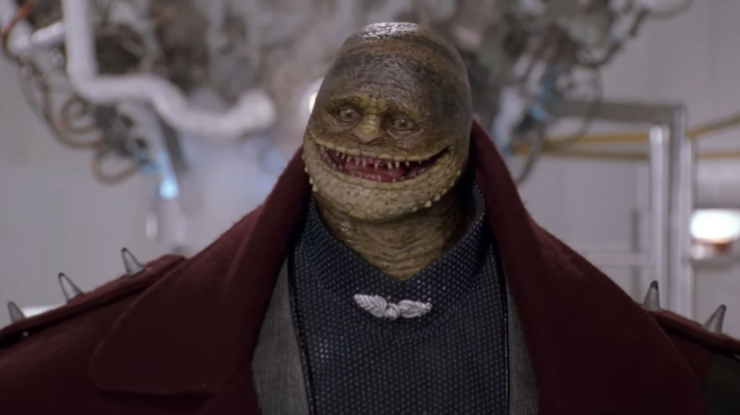
But if you divorce what you want from a Super Mario Bros. movie from the actual Super Mario Bros. movie, then what you get is a genuinely interesting, engaging film. It’s not great, and it often doesn’t tie together logically, but I could say the same thing about a movie like Brazil or 2001, both of which convey a unique aesthetic and clear theme in lieu of a tightly-plotted story.
Super Mario Bros. certainly doesn’t get that far, but it creates a world you’ve never seen before, and it keeps you there, wondering if things could possibly get any weirder.
In the very last scene of the movie, Mario, Daniella, and Luigi are making dinner when there’s a knock on the door. In bursts a shell-shocked Daisy, clad in combat gear, toting a huge gun and yelling for Mario and Luigi. “You’re never gonna believe this,” she says, and Mario and Luigi immediately start suiting up for a new adventure.
It’s a testament to the charm of the film that decades later, I am still curious what this Mario, Luigi, and Daisy did after the credits rolled.
Originally published November 2012, if you can believe it
Chris Lough is the director of Tor.com. This article is an updated version of one he wrote nearly ten years ago. Eagle-eyed viewers will notice that the headline has changed. He was sorry then, but is not now, and probably never will be again.










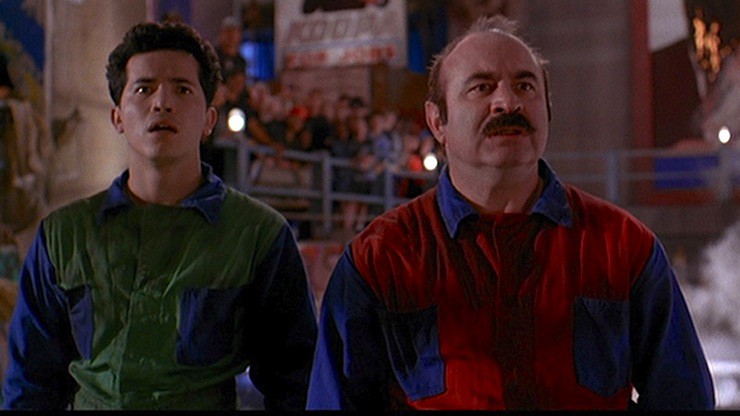
THANK YOU!! I’ve been saying this for *checks watch* thirty years.
I saw this 30 years ago when I was thirteen and I thought it was awesome.
I’m seeing the new one next week with my daughters. I’m sure it will be great, but I will miss the insanity of the original.
30 years ago, I begged my parents to let me invite kids from school to go see this for my birthday. One of the kids kept going on and on and on about this other dinosaur-related movie coming out in two weeks.
Yeah, nobody remembers Jurassic Park, either.
Not bad at all indeed

I was telling myself “I think I already see this text somewhere”, hahaha!
Yeah, this movie is weird, but I liked it when I was a kid (more a Sonic guy than Mario, so didn’t make me angry that it was something original).
As a kid I liked the movie, I love the cast and Bob will always be the face of mario as a total bad a**. I always was able to look at the story as mario. It had everything I knew from mario. Koopa takes over the mushroom kingdom, he turns the citizens into something though dinosaurs rather than blocks. It’s also satisfying to watch Koopa give scapelli what he had coming. I remember watching the prison break scene and for some reason that made me laugh to tears. It also may be the thing that brainwashed society into Daisy being luigi’s love interest. I guess I look at it as a mario story where mario doesn’t show up until much later after Koopa takes over and is at the point of wanting more.
Mario Mania was huge back then. The draw to make the movie must have been massive. The success at making a sweet deal with no oversight from Nintendo that has been very jealous of its properties, amazing. I think the issue is that few people did the research to know the origins of the game was actually Alice in Wonderland. Even Nintendo forgot that and strayed from the framework and Maria Mania is gone. The new movie isn’t going to change that. However, even though by accident, I think Super Mario Bros the Movie almost got it right. I watched it in the theater. I owned the VHS. I loved the movie even if didn’t hit all the right notes. It was a fantastical place and was so out there from the world Mario and Luigi came from. It made me think of Roger Rabbit when I watched it the first time. I so wanted Luigi to stand out and be the hero! I see the movie now and I still like it. Though the Goomba-fication scenes still are part of my nightmare fuel…
1993 is hardly “pre-internet”.